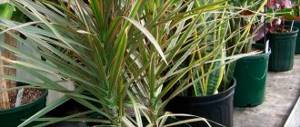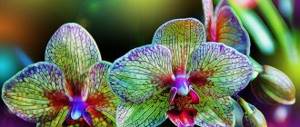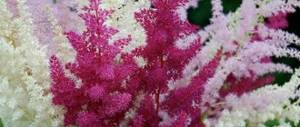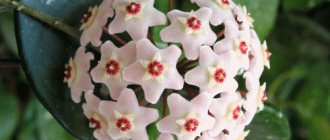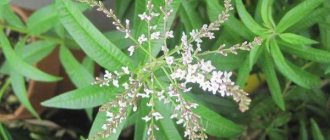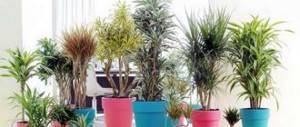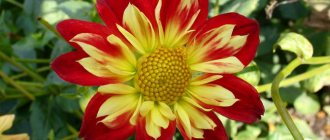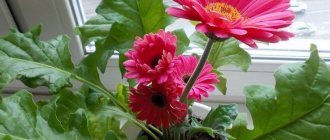All about bamboo: growing according to Feng Shui
good luck symbol
plant of happiness
The ancient teachings of Feng Shui say that this plant will become a source of good luck and happiness for the person who started growing it.
That is why quite a lot of people strive to acquire a type of Dracaena Sander, which, in fact, is called the bamboo of happiness and is perfectly grown as a houseplant.
According to the philosophy that has come to us from China, if you place a “tree of happiness” in the south-eastern room, and place a sculpture of a toad with coins next to it, then luck and financial well-being will never leave this house.
The number of stems grown in one container matters.
- If there are 3 of them, they will help attract good luck in business. It would be better to place these pots in the office.
- 5 stems symbolize personal happiness, and it is better to place such interior decoration, of course, in the bedroom.
- 7-fold stems predict strong, heroic health
- Well, in order to achieve a positive effect on all aspects of life, the Feng Shui technique recommends growing 21 stems in one pot.
A species growing wild in nature is not suitable for home conditions, and it is also unsuitable for decoration due to its enormous growth and rigid stems that cannot be intertwined. Wild bamboo plant has nothing to do with the indoor plant of the same name, moreover, they are not even relatives. In nature, where bamboo grows, it reaches as much as 50 meters in length and is considered the tallest herbaceous species. It is used by local residents to collect sap and also for construction.
The Legend of the Painted Mice
A long time ago, in the 14th century, a young Japanese artist named Seshu angered the monastery authorities. Because he was drawing during religion lessons, he was tied to a tree and forced to meditate. But Seshu decided to do what he loved: he drew little mice on the sand with his toe. Yes, so masterfully that they immediately came to life, gnawed through the ropes with which Seshu was tied to the tree, and freed their creator.
Tags: Creativity, master classes, drawing, sumi-e
Bamboo indoor plant care at home: what it looks like
bamboo spiral
The plant has a bare stem, which has green leaves at the end. At home, on the windowsill, the created composition with bamboo in a vase will look very exotic. The color of the stems can be either emerald green or straw yellow. But the leaves and shoots will have a more intense color only if good lighting is provided throughout the day.
Bamboo stems have amazing flexibility, they are able to twist into a variety of spiral shapes, it is this feature that makes the plant suitable for creating bonsai. Unfortunately, the flowering of Dracaena Sander at home is extremely rare.
Species diversity of indoor pets
Especially noteworthy are several types of indoor bamboo, which have gained the greatest popularity among plant lovers. Each of them has an individual shape and color of leaves, as well as a different shape of stems. The most famous and suitable for growing at home include the following.
Lucky Bamboo
The main one has a beautiful name - bamboo Lucky spiral care at home is simpler than the others, but gardeners call it a little more simply - Sander's dracaena.
This plant can be classified as a species that is less demanding of care, but at the same time requires constant provision of a special microclimate. Dracaena does not complain about infrequent watering and dry soil, but rather welcomes it. Most often the plant is used as a landscaping area in a room or as part of an interior design.
Reproduction occurs by seed or using cuttings, due to the lack of root layering. Initially, Lucky's appearance is straight, but it is forced into a spiral one.
Bamboo Muriel
The largest indoor specimen with a stem height of about 2.5 meters is from the Muriel variety. This type is an excellent solution for a large room or growing in the garden. The plant gets along very well with any frame, but due to its enormous size, care is very difficult, especially if it is done by one person.
Variegated
Variegated bamboo has achieved the greatest decorative value, and all thanks to its crown with unusual colors.
The leaves are slightly colored light green, and the edges are decorated with small white inclusions.
The stem has a green-yellow color;
it is interesting that by the time it is transplanted to a new place, it is covered with snow-white spots.
There is one significant drawback: the plant quickly becomes unattractive due to the drying out of the foliage in combination with the active change of the crown.
In addition to these representatives, in the indoor version there are:
- Multilayered with narrow foliage
- Bluish or short, growing in miniature sizes, which rarely exceed the 40 cm mark
- Variegated with decorative foliage, has an average height of up to 1 meter
- The brilliant variety appears as bright emerald green with narrow leaves.
Varieties for open ground in Russia
How is bamboo grown in open ground in Russia? For moderate climatic regions of the Russian Federation, only frost-resistant species that can be planted in open ground are suitable. The Chinese phylloblast (sinarundinaria pleioblastus photo) will not like such conditions. The plant will be able to withstand short periods of frost down to -20 °C. If the indicator becomes lower, the plant will freeze to the ground level. In some areas, the earthen layer often freezes, in which case the phyloblast will die from frostbite. The ideal temperature for the species is +30 -9 degrees.
Several species can be grown in the Moscow region, called Saza bamboo (Sasa tsuboiana). Their beauty is no worse than that of the southern varieties and there is no compromise in height: they range from 30 cm to 3 meters.
Tree of happiness, bringing prosperity to the home care video:
Bamboos in natural habitat
In their homeland, different types of bamboo are both herbaceous and woody plants. They reach a height of many meters, but in pots or tubs their sizes are smaller, since the walls of the containers do not allow them to grow. But there are varieties that do not grow more than a meter in height.
Bamboos of the grass family originate from tropical and subtropical regions of Southeast Asia. These are the largest plants among cereals, with geniculate hollow stems-straws.
Bamboo grows on the edges of tropical forests, along river banks, and in clearings. Bamboo is known as one of the most useful plants; there are up to 600 ways to use it.
Burmese bamboo reaches the greatest height ; its homeland is India. Its tree-like stems grow up to 40 m in height, with a diameter of 10 to 20 cm. Such giants, of course, are not used in indoor culture. Low-growing and dwarf forms of bamboo are suitable for growing indoors.
Burmese bamboo reaches the greatest height (40 m)
How to grow bamboo at home?
The tree of luck is an amazing plant; for its successful maintenance, you can use not only flower pots, but also an aquatic environment. While the initial stage of growth is in progress, the stem can be given any desired shape. What methods of cultivation exist, and what are their features?
Use of the aquatic environment
The homeland is located in tropical forests, and there are not many dry places here, which is why some plants moved into the water.
How to care for bamboo in water? To create conditions as close to natural as possible, a special environment is created for the plant.
Before planting, the root part is washed; if necessary, shoots that are too long can be trimmed. They cut down to a third of the entire rhizome, and this will not harm it, because the growth rate of bamboo is impressive.
Any suitable item at the discretion of the gardener will be suitable as a container. You can use decorative stones to make the display more interesting, but before doing this, do not forget to treat them with boiling water. The stem parts are lowered into the selected container, the pebbles are carefully laid out, then it is the turn of the main component - water.
Note to plant lovers . This method of cultivation involves the use of distilled or melt water. There shouldn't be any problem with the last component. Water is poured into a plastic bottle and sent to the freezer. When defrosting, it is recommended to throw away the frosted core of the ice where all sorts of harmful components settle along with chlorine.
When caring for a plant, the water should be changed systematically; most often, this procedure is carried out once every 14 days. If an unpleasant odor, bubbles, foam, or sediment begins to appear, then the fluid needs to be changed more often. The presence of yellow foliage is an indicator for immediate water replacement.
It is worth considering that with this specific method of cultivation, plants need fertilizing, which is applied once every 30 days.
Using hydrogel
The procedure is similar to that described above, but here they use granules rather than stones.
How does bamboo grow in hydrogel? It has a specific feature: after some time it changes color, all you need is to systematically add a certain amount of water. Fertilizing is applied twice a year.
It is important not to forget about the root system; it should not dry out or be exposed and protruding above the granules.
Of course, such an original method of growing will be a highlight in the overall interior of the room.
Application of soil
This method can be considered traditional. Finding the soil you need for bamboo is easy; specialized stores offer a huge range of different soils that are suitable for dracaena. You can prepare the soil with your own hands, taking into account some important aspects.
Potted bamboo should develop along with a good drainage system to prevent possible:
- mold formation
- accumulation of excess moisture
- the appearance of hostile microorganisms
You can plant several stems of bamboo dracaena in one container with soil. To make it more convenient to care for them, as well as to give them a more decorative look, it is recommended to tie several plants into a bundle with braid rope, choosing the color you like. Any container will fit under the pot, not just traditional devices. Some people use glasses and vases. As soon as the pet begins to “outgrow” its house, it is transplanted into a bucket or deep jug. If the height of the plant exceeds 0.8 meters, it is recommended to move the container with it from the surface to the floor in the immediate vicinity of a window opening or next to a light source.
Subtleties of care
- To successfully grow bamboo in an apartment, you need to choose a place where light and shadow will be optimally combined. Excessive lighting will lead to lush growth of greenery and frequent pruning will be necessary; moreover, dense shade affects the health of the stems.
- With excessive care and frequent fertilizing, bamboo can begin to bloom, and this is a sign that it will soon die. In the wild, the plant begins to produce flowers from the age of 30, and then it begins to die off. The flowers are white in color and have a delicate aroma.
- Trimming creates a million possibilities to create any shape. When the top part is cut off, growth stops and foliage begins to grow denser, which affects the overall outline of the plant. It is necessary to trim the shoots above the node at a distance of at least 5 cm.
- It is necessary to observe the timing of transplantation, otherwise the pet will shed its foliage.
- With the onset of summer, it is recommended to expose dracaena to fresh air, which any plant needs.
- To create an ideal microclimate, you should use humidifiers. If such devices are not available, spray bottles are used. Spraying is carried out once every few days. If necessary, the leaves can be wiped with a cloth soaked in water.
Transplant Basics
It is important to know! Bamboo is very painful to transplant, and therefore if there are no important prerequisites for this procedure, then you should refrain from it.
First of all, the required capacity is selected.
There should be some space left for the root system, but not very much. The ideal option is if the rhizome easily enters the pot and leaves 4 cm of free space. Secondly, drainage holes are made if there are none. Install a drip pan to allow excess liquid to accumulate. A layer of drainage is placed along the bottom of the pot.
After these manipulations, the dracaena is planted in a container and filled with soil; it does not need to be thoroughly compacted; if necessary, you can simply add more soil. The plant in a new location must be watered properly; sufficient time is given to the transplantation procedure. Excess water is poured out of the pan, after which the pot with bamboo is moved to the place designated for cultivation.
How to trim
bamboo pruning
This procedure is carried out if it is needed to create an attractive appearance or provide the desired shape. The owner must pay enough attention to the root system to remove defective, dry shoots.
To create a bushy type, it is recommended to get rid of the upper shoots in the place where they branch.
Trimming branches from below and removing sections of insufficient thickness will help maintain decorative appeal. It is possible to give a certain shape to the stems only while the plant is still a seedling; garden twine or thick wire is used for garter.
It is recommended to dip the cut shoots in melted paraffin, as it preserves the cuts and prevents infection.
Happiness bamboo propagation at home
There are several ways to breed dracaena:
- seed (very rare);
- proliferous;
- cutting;
- root;
- apical.
When using offspring and tops, you need to have a lot of patience, and remember that this method will take time and effort. This method of reproduction is a rather difficult undertaking.
But the seed version is considered the most difficult and plants grow very rarely at home. Sow the seeds, wait until the seedlings appear, and then properly care for them for a long time. Not every gardener will do this.
Division by root
Another method is used by plant lovers and it is called root method. It involves carefully separating the shoot from the central part of the root. The main thing is to prevent rupture or damage. Allows the separation of only mature specimens with root leaves. To treat the cut site, a garden varnish is used, which protects the plant from infections or rot. Thanks to this method, the root system is updated. The method is a preventive measure against corrosion and death of the root part.
Propagation by cuttings
Cuttings are the most commonly used, it is the most affordable, and is also ideal for a representative of this family.
How to propagate bamboo at home from cuttings? Using cuttings is very simple, and there is no need to replant the plant. It is best to reproduce with the onset of spring. For cutting, a part with a significant presence of a flank node, from which branching will begin in the future, is suitable. The selected part is carefully separated from the main plant and placed in a container with soil or water for the roots to appear. If the second option is chosen, then it is important to remember to systematically change the water. After 30–48 days, the cuttings will begin to develop a root system. Planting in the soil is carried out according to the rules of transplantation.
Diseases and pests of bamboo
Bamboos, as a rule, are not very susceptible to various diseases or pest infestation. A number of fungi cause spots or rust to appear on leaves, but it is rarely treated with fungicidal preparations. Aphids and scale insects settle on young leaves. These pests are eliminated by chemical treatment.
If you want to grow something unusual at home, then bamboo is perfect for this! Original, unpretentious and disease-resistant, it will perfectly decorate any interior.
What can cause bamboo diseases?
Plant health problems arise due to improper care:
- The appearance of dark spots indicates the presence of fungus. Fungicides are used for treatment, and the room with bamboo must be regularly ventilated;
- There is no growth, most likely due to a lack of mineral components. It is necessary to apply fertilizers, but the main thing is not to overdo it with the amount;
- Darkening and softening of leaves. It happens when the temperature regime is violated. At low levels, the pet sheds its leaves. The problem can be easily solved by installing additional heaters.
- Why do the leaves turn yellow? If all conditions are met and proper care is taken, the foliage may begin to turn yellow and dry out. Most often this indicates the presence of some kind of disease. The infection can be spread even with soil purchased in a store. Or get it from mites that have moved from aphids from neighboring plants.
Luck Bamboo is an undemanding and unpretentious plant. If the care is correct, it will immediately begin to grow rapidly and delight the owner with its bright colors and original appearance.
The plant can be used as an original part of the decor or as a decoration in apartment design. Especially if you form the stem in a timely and correct manner, twisting and turning it in different directions. Also, do not forget about the symbolism of this handsome man, because what if you really can use it to attract happiness, good luck and health?
When thinking about choosing one or another type of indoor bamboo flower, you should give preference to dracaena.
It is important to remember that too much care for bamboo can be just as dangerous as its lack.

